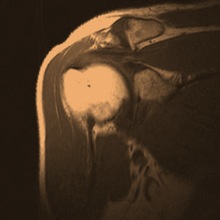Most Tears in the Rotator Cuff don’t cause Symptoms
The ascendancy of MRI imaging as the “gold standard” to find structural abnormalities in the body has been meteoric. In less than a generation, the medical world of diagnosis has been immeasurably enhanced by early detection of all sorts of problems from tumors to torn ligaments using advanced imaging. However, this explosion in our ability to find abnormalities in structure has come at a price in the areas of orthopedics and pain management. It all began when researchers wondered if everything we see on these scans is actually causing symptoms. This steady stream of published research has marked what I am now beginning to call, the slow and steady end of the structural model of pain. Let me explain. It used to be commonly thought that every small Ditzel seen on an MRI meant something was wrong and in need of some surgical treatment. This approach has led to millions of surgeries worldwide for the treatment of pain. This way of treating pain would only make sense if we had good research showing that everybody without pain had a normal MRI and everyone with pain had an abnormality on their MRI. However, many different things in the body can cause pain in a given area like the shoulder or the knee. So if for example research revealed that a lot of patients with normal scans have pain and many patients without pain had abnormal MRI’s, then physicians would have to take any MRI abnormality with a “grain of salt”. In medical terms, this is known as a false positive (the test for the disease shows positive but the patient really has nothing wrong with them). Let me give an example of a patient with shoulder pain. The following is a short list of things that can cause shoulder pain: rotator cuff tears or shoulder arthritis, a pinched nerve in the neck, or damaged/arthritic joints in the neck. In our patient, if rotator cuff tears are common in patients who don’t report shoulder pain, then finding a rotator cuff tear on MRI doesn’t get us any closer to determining if that rotator cuff tear is causing the patient’s shoulder pain. For all we know it may just as easily be a pinched nerve in the neck or a damaged neck joint. This problem of a false positive with MRI already exists in knee patients with knee meniscus tears-large studies have concluded that knee meniscus tears are common in middle aged and older patients without knee pain. Regrettably for doctors, things just got more complicated when it comes to a diagnosis of what causing shoulder pain based solely on an MRI. A large Japanese study published this week demonstrated that 2/3’rds of patients without shoulder pain had rotator cuff tears. Since most shoulder MRI rotator cuff tears don’t correlate with symptoms, the authors did make some suggestions for trying to correlate MRI rotator cuff tears findings using physical exam in patients with shoulder pain; such as making sure the patient had a positive impingement sign and weakness in external rotation. These recommendations bring up a critical point; that an MRI without a good physical exam is often meaningless for determining why someone is hurting. Too often these days we physicians substitute an MRI report for actually placing hands on the patient and getting a good history, and regrettably, this often leads to unnecessary surgery. The upshot? It’s imperative that whatever MRI findings you have (whether the abnormality is in your shoulder, knee, or another joint) be confirmed on examination as the likely cause of your pain. If patients don’t insist on this important step, then shoulder surgery for a normal MRI finding related to normal aging may be in their future! If there’s any question of whether the pain is really coming from the joint, request that the doctor numb up the area under imaging guidance (called a diagnostic block) to ensure what’s being seen on the image is really causing pain.

If you have questions or comments about this blog post, please email us at [email protected]
NOTE: This blog post provides general information to help the reader better understand regenerative medicine, musculoskeletal health, and related subjects. All content provided in this blog, website, or any linked materials, including text, graphics, images, patient profiles, outcomes, and information, are not intended and should not be considered or used as a substitute for medical advice, diagnosis, or treatment. Please always consult with a professional and certified healthcare provider to discuss if a treatment is right for you.

